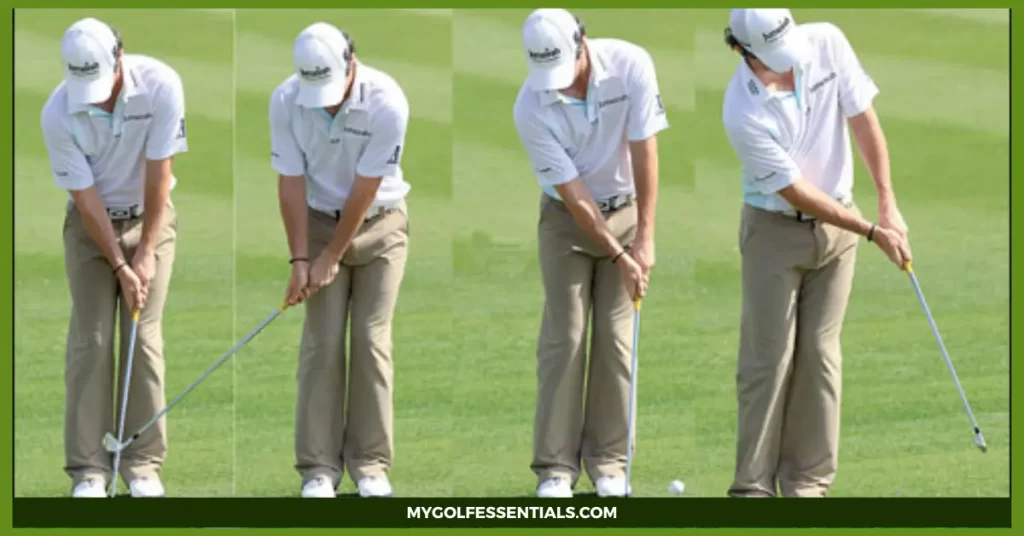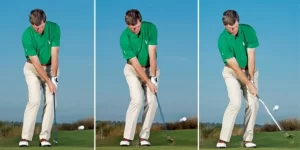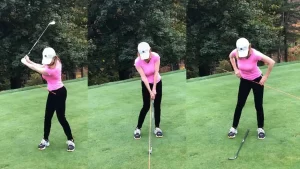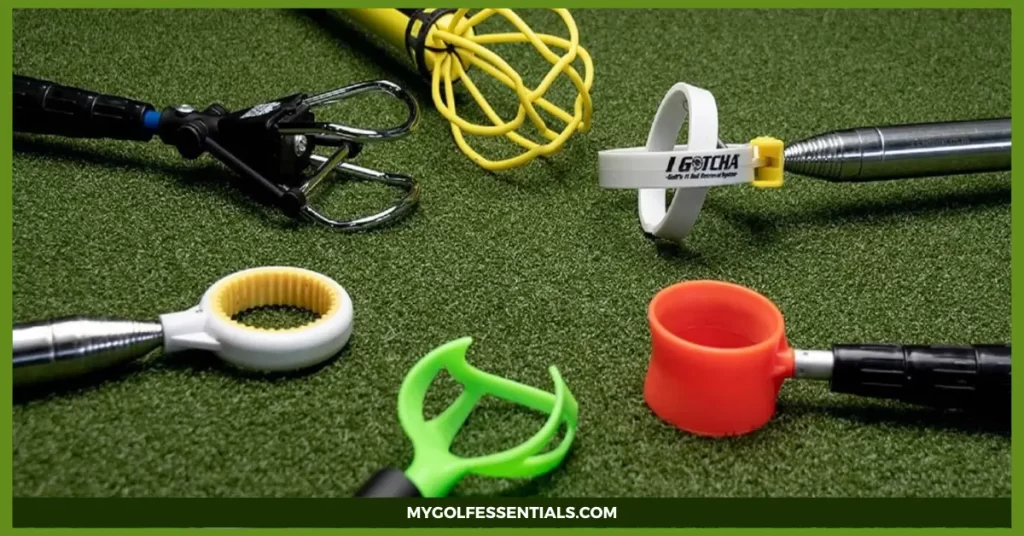
Golf is a classic game with essential skills and techniques that can help any beginner step up their golf game. While all professional players have perfected the basics, the chip shot is an often-overlooked skill in amateur play that has the potential to take your performance to the next level.
Mastering this simple technique can give you control over your shots on shorter distances and more consistent scores across every round of golf you play. In this blog post, we’ll discuss what makes the chip shot so important for improving your game, how it works, and some tips on mastering it. Continue reading to learn how you can become a pro at chipping!
The chip shot is important in golf because it’s the simplest method of getting your ball from the rough to the green. It minimizes risk while providing a great way for players to escape difficult situations on the course.
The chip shot should be used when you are close enough to the hole that you need just one or two shots to get there, such as when in the rough. With a chip shot, you can use your club to hit the ball with less loft and more control, allowing it to roll along the ground toward the hole. What is chipping?
The chip shot is a specialized golf stroke that moves the ball from a short distance, usually near or on the green. This technique requires precise control over the power and direction of the shot, allowing you to direct your ball exactly where you want it to go. With chipping, you can keep your ball position in play in areas where other strokes might be difficult.
Why is chipping important?
Chipping is a golf shot that requires precise technique and the right combination of power and accuracy. Put, chipping is a short-distance shot designed to move your ball thin from the rough to the green with a minimal loft so it rolls along the ground toward the hole. This type of shot requires more control than other shots, such as a full swing, and is often used when you are within a few yards of the green or hole.
The key to mastering the chip shot is understanding the mechanics of it. You’ll want to select a club with less loft, such as an 8 iron or 9 iron for shorter distances, and ensure your posture is correct. Keep your feet, knees, hips, and shoulders aligned straight when taking your stance.
This will help you transfer power from your lower body into the shot. It would be best to use a shorter backswing than you would for a full-swing shot for extra control. Finally, lead with the clubface during the down-swing and pay close attention to where it meets the ground; this is known as the “hit” and will determine how far your ball travels.
How do I master chipping?

The key to mastering the chip shot is practice. Please ensure you are comfortable with the basics of the shot before you try it out on the course. Start by practicing with small, controlled swings and gradually increase your power until you feel confident hitting targets from various distances.
Additionally, be mindful of the type of surface you are hitting off of, as this will affect how much spin is on the ball and its trajectory over the green. Once you feel comfortable with the basics, you can experiment with different techniques and power levels to fine-tune your chip shot accuracy.
Finally, remember that practice makes perfect when it comes to chipping. Remember to stay patient and focused as you develop your skills. Even professional golfers take time to hone their talents – so don’t get discouraged if it takes a while to perfect your chip shot! With dedication and focus, you’ll soon be a master of the chip shot.
What Club To Use on Chip Shots?

When mastering the chip shot, the most important equipment is the club you use. The right club can make a big difference in your accuracy and consistency on chip shots.
The optimal club for a chip shot typically depends on how far away you are from the green. Generally speaking, if you are within 50 yards of the green, you should use a wedge, such as a pitching or sand wedge. Wedges have more “bounce” than other clubs, which helps the ball roll and stop quickly once it lands on the green.
You might reach for a club like an 8-iron or 9-iron for longer chip shots instead of a wedge. The extra loft of these clubs helps the ball get more height and distance so that you can land your chip shots closer to the pin.
When selecting a club for chip shots, it’s important to remember that the loft is king. The higher the loft on your club, the easier it will be to control your chip shots and keep them low enough to stay out of the rough. It’s also important to practice with different clubs for chip shots to find the right club for any situation.
To get the most out of your practice sessions, try to simulate real-life scenarios as best you can—considering things like wind speed and direction, elevation changes, and other factors that affect how a ball will travel. With some practice and the right club selection, you can quickly become an expert at hit chip shots!
Drills for Better Chipping

Once you’ve become familiar with the basics of chipping, it’s time to incorporate drills into your practice. By putting yourself in various realistic scenarios, you will develop the skills necessary to make consistently accurate chip shots every time. Try the following drills to sharpen your chipping skills:
- Place balls at various distances from the green and practice hitting them in a straight line toward the flag. This will help you get used to controlling your power and accuracy.
- Practice different shots from side-hill lies, where gravity takes some of the ball’s energy away. This helps you learn to adjust your swing for different situations.
- Practice hitting the ball with a high and low trajectory, backspin, and topspin. This will give you more control over how the ball moves after it lands on the green.
- Please set up various targets and practice hitting them from different angles. This will help you learn to adjust your shot for whatever lies ahead on the course.
Practicing regularly to perfect chip shot
Once you’ve become accustomed to the basics of chipping and experienced a few drills, it’s time to put your skills into practice. Taking the chip shot out on the course is the best way to test and improve your abilities. When practicing, remember that each situation will require a different approach. For instance, if you are hitting from the rough, you may need to add more power to get your ball out of the grass.
Also, don’t forget to focus on accuracy as much as power – it’s better to hit a shot close but not quite perfect than overshoot and land in a bunker or water hazard. You can ensure your chip shots become second nature by practicing regularly and repeating the drills you’ve learned. With enough time and dedication, you’ll soon become a pro at chipping!
Following these tips and mastering the chip shot ensures your golf game is taken to the next level. With precise control over each putting stroke and consistent accuracy, you can make smarter decisions and take on every round of golf more confidently. Start practicing today and become a chipshot master!
Learn the basics of Chip Shot form and technique

Now that you understand the importance of mastering chip shots and some drills for practice, it’s time to learn the basics of form and technique. Proper form can make all the difference between a successful chip shot and an errant one. Here are a few tips to help you master your chip shots:
- Stand with your feet shoulder-width apart and square to your target. Make sure you are well-balanced to gain accuracy and distance control.
- Keep your arms close to your body and take a short backswing for the backswing. A shorter swing will give you more precision over distance and power.
- On the downswing, ensure that your body weight shifts from the back foot to the front. This will help your club contact the ball in its center for optimal spin and accuracy.
- For further control, you can use a shallow arching swing to hit low chip shots onto the green or a more aggressive downswing for higher trajectory chips.
Now that you understand the basics of chip shot form and technique, it’s time to explore how different clubs can be used for different shots. The club selection will vary depending on the situation and distance from the green.
Adjusting your ball position is a simple way of changing the trajectory of your shots. A more centered ball position will eliminate some forward shaft lean at set up and launch the ball a bit higher.
Mastering the art of chipping greenside

Greenside chips are the easiest and most common of all chipping shots. For these, you can use a wedge – from your gap wedge to your lob wedge – depending on how far away you are from the green. Remember to keep your backswing short and controlled for greenside chip shots, and use a lower arching swing to keep the ball low.
Pitch shots are slightly more difficult and require more power than greenside chips. You can typically use your sand wedge or lob wedge to achieve the desired distance and trajectory for pitch shots.
Remember that when making these shots, you must swing with a slightly longer backswing and concentrate on making sure the clubhead contacts the ball with a downward motion.
Creative ways to use chip shots around obstacles
- Chip shots can be tricky, especially when obstacles are in the way. Proper chipshot form and technique are essential for success in a bunker, tree, or water hazard. Here are a few creative ways to use chip shots around obstacles:
- To hit over an obstacle, try using a higher trajectory and increased power on your backswing. This will give you the distance needed to clear the hazard and reach the green.
- For obstacles in front of the green, focus on controlling your power and accuracy with a short backswing and shallow arching swing. Depending on the distance, you may need to switch between your gap wedge, sand wedge, or lob wedge.
- If you’re hitting from side-hill lies, use a higher trajectory and increased power on your backswing. This will help counter the effect of gravity to give you the desired result.
Change up your chip shot style depending on the landscape
Chip shots can be one of the most intimidating shots for a golfer, requiring precision and accuracy. However, with a few simple tips, you can master this seemingly difficult shot. The first step to mastering chip shots is changing your style depending on the landscape.
If the ground is soft and you have more run-up available, use more of an aggressive style of chip shot. This involves setting your feet slightly open, keeping your weight forward, and sweeping with the club. If you are in more of an open area, use a punch-style chip shot. This requires a square alignment rod, more weight on the back foot, and a steeper angle for the club to cut through the grass.
Once you have chosen the correct style for your pitch shot, it is time to focus on accuracy. Keep your head down and your eyes on the ball as you swing. A good practice tip is to imagine a blade of grass between the ball and your club face as you take a divot after impact.
Additionally, ensure your hands are ahead of the club head throughout the shot. This helps maintain accuracy, keeping the clubface square and preventing slices or hooks. Finally, consider the loft angle and how much you want to roll the ball on landing when selecting your club. Experiment with different clubs for this shot to find what works best for you.
Tips for proper execution and technique
The chip shot is one of the most important shots in golf; mastering it can take your game to the next level. Most golfers struggle with their chip shots because they don’t understand the proper technique for executing them. To execute a short game shot effectively, you must position your body correctly and use the right swing motion.
First, you must set your body up for success, so start by standing with your feet shoulder-width apart and ensure your weight is distributed evenly between them. Then, place the ball in the middle of your stance and bend over until your arms hang down naturally. Ensure the clubface is square to the target line and grip it firmly but not too tightly. You should also keep your head down and focus on the ball throughout the swing.
When you’re ready to swing, ensure your feet are planted firmly and move your arms in a pendulum-like motion, keeping them close to your upper body. Make sure to hit the golf ball first and then allow the club head to follow through into the ground or grass.
Finally, keep your head down and follow through naturally, keeping your weight balanced throughout the entire motion. You can quickly become an effective chip shot golfer with practice and dedication to mastering these techniques.
FAQs
What are the basics of chip shot form and technique?
The basics of chip shot form and technique include keeping your weight on your left side, setting up with a narrow stance, using a short backswing, and transferring your weight from the back foot to the front. You can also use a shallow arching swing to hit low chip shots onto the green or more power and a longer backswing for pitch shots.
What tips can I use to improve my chip shot technique?
To master your chip shot technique, practice is key. Work on building a consistent form and adjust your club selection for different scenarios. Additionally, you can change up your chip shot style depending on the landscape; use a low-trajectory shot with backspin when hitting from a downhill lie and increased power and a high trajectory from an uphill lie.
How do I hit an obstacle?
To hit over an obstacle, focus on controlling your power and accuracy with a short backswing and shallow arching swing. Depending on the distance, you may need to switch between your gap wedge, sand wedge, or lob wedge. For obstacles in front of the green, try using a higher trajectory and increased power on your backswing to clear the hazard and reach the green. Ensure you have enough room and practice this shot thoroughly before attempting it on the golf course.
What are the benefits of mastering chip shots?
Mastering your chip shot technique can take your game to a new level. It will provide you with more control and accuracy when hitting greenside chips and pitch shots, allowing you to make smarter decisions when faced with tricky situations on the course. You’ll gain confidence in hitting those difficult shots and be better prepared for the next round. With enough practice and dedication, you can become an expert at chipping greenside!
Conclusion
Chip shots are essential to any golfer’s game; mastering them takes time and dedication. From understanding the basics of chip shot form and technique to finding the right club selection for different scenarios, there is much to learn about chip shots. Practice regularly with different shots – such as punch, bump-and-run, or flop – and adjust your technique depending on the landscape. With enough time and effort, you can take your golf game to the next level with a chip shot mastery!



